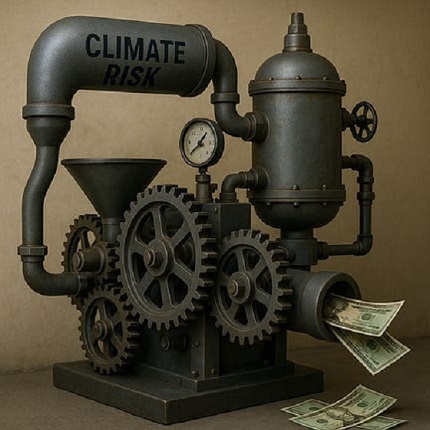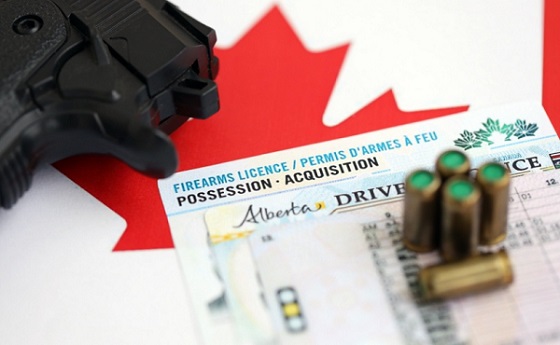Alberta
German Fitness Trainer Finds Himself Stuck in Calgary – And Making the Best of It!

Cultures collide as COVID-19’s descent on the world leaves personal trainer global adventurer Darian Bessell stuck in Calgary.
Originally from Germany, Darian has been travelling the world for the last year and a half, landing in Canada in February with plans to stay and work for a year. After getting all his permits in place and obtaining a work visa, he was hired by one of the major gyms in Calgary as a personal trainer. Unfortunately, he was immediately laid off after COVID-19 hit the city.
Seeing the situation as an opportunity to strike out on his own, Darian began offering his services as a personal trainer online, offering free consultations by Zoom or in person. His first client, Matt Keay, connected with Darian during his search for a way to improve health and mobility as well as mental wellbeing in his demanding role as a CEO.
“I look over at my two-year-old daughter and she’ll be holding a squat position playing with toys for nearly an hour, totally natural for her,” says Keay, “why can’t I do that?” Keay suffers from sore hips and wrists due to years of abuse from skateboarding and poor diet. This proves difficult, as his role as a leader demands high performance and consistent energy.

“I’ve got training every day with Darian … well, it’s more like all day long,” says Matt, “I’ve heard people say how fitness is a lifestyle, well I really understand that now. I am standing more at my desk, doing more stretches, busting into a squat in the boardroom and the pain I’ve dealt with for years is melting away.”
Darian Bessell, newly appointed Business on Camera Director of Physical and Mental Health will bring health and wellness to high-performance entrepreneurs in Calgary. “The knowing-doing gap is a worldwide common issue,” offers Bessell, “people know that enjoying nuts as a snack is healthier than a chocolate bar, and they know the way they feel physically could be better. Often some simple support tools to improve mobility can have a huge impact on overall fitness and hold the key to a new healthy lifestyle.”
The human body sends signals that it is in poor condition by aching and demonstrating discomfort. The mind also sends signals, for example, feeling depressed or tired all the time. Most people know that they have to change something, but it is all too easy to get caught up in routines and maintain bad habits.
“Most people have the desire to do more for their mental and physical health, so why not just do it then?”
Health and fitness is one of the most flooded industries on the market with new gadgets, diets and methods constantly emerging, leaving no shortage of options when it comes to personal health.
“Choosing to work with Darian was based on the education he had regarding the symbioses between mental health and physical performance, nutrition and mobility. He often referred to a program created by Dr. Kelly Starrett called “Becoming a Supple Leopard,” continues Keay, “a ton of professional athletes and stunt actors are Supple Leopards; I would describe it as intentional and intuitive. For me at this time, the goal is to feel better everywhere, increase mobility, energy, and mood in under thirty minutes a day.”
Darian’s goal is to help individuals overcome the disconnect between desire and action by cultivating discipline and a strong commitment to health and happiness in his clients. “People have to take a huge step to get over the gap between knowing what is good for them and really having the discipline to do it,” says Bessell, “Human beings get used to things so fast and fall into a cycle of ‘I need to do something about that’, then continue to ignore it, and fall into the deep hole between knowing and doing.”

Darian gives people that much-needed kick in the butt. By helping clients reposition their approach to fitness and replace negative habits with positive changes, his program addresses physical and mental wellbeing, leaving clients feeling better than ever. “Other benefits include better sleep, more focus and better work-life balance,” says Darian, “it is all about implementing a holistic approach to health to get your body in an efficient, healthy position, and maintain it with intentional practice.”
Keay is thrilled with his results and excited to see where the program takes him. “I am constantly paying attention to my body now,” he says, “the way I sit, the way I walk, engaging my core, doing a squat instead of bending over to pick something up…it’s really had a tremendous impact on my ability to move properly, and we’re just getting started.”
Darian can be reached by phone at 403-478-3836 or [email protected]
For more stories, visit Todayville Calgary.
Alberta
The case for expanding Canada’s energy exports

From the Canadian Energy Centre
For Canada, the path to a stronger economy — and stronger global influence — runs through energy.
That’s the view of David Detomasi, a professor at the Smith School of Business at Queen’s University.
Detomasi, author of Profits and Power: Navigating the Politics and Geopolitics of Oil, argues that there is a moral case for developing Canada’s energy, both for Canadians and the world.
CEC: What does being an energy superpower mean to you?
DD: It means Canada is strong enough to affect the system as a whole by its choices.
There is something really valuable about Canada’s — and Alberta’s — way of producing carbon energy that goes beyond just the monetary rewards.
CEC: You talk about the moral case for developing Canada’s energy. What do you mean?
DD: I think the default assumption in public rhetoric is that the environmental movement is the only voice speaking for the moral betterment of the world. That needs to be challenged.
That public rhetoric is that the act of cultivating a powerful, effective economic engine is somehow wrong or bad, and that efforts to create wealth are somehow morally tainted.
I think that’s dead wrong. Economic growth is morally good, and we should foster it.
Economic growth generates money, and you can’t do anything you want to do in social expenditures without that engine.
Economic growth is critical to doing all the other things we want to do as Canadians, like having a publicly funded health care system or providing transfer payments to less well-off provinces.
Over the last 10 years, many people in Canada came to equate moral leadership with getting off of oil and gas as quickly as possible. I think that is a mistake, and far too narrow.
Instead, I think moral leadership means you play that game, you play it well, and you do it in our interest, in the Canadian way.
We need a solid base of economic prosperity in this country first, and then we can help others.
CEC: Why is it important to expand Canada’s energy trade?
DD: Canada is, and has always been, a trading nation, because we’ve got a lot of geography and not that many people.
If we don’t trade what we have with the outside world, we aren’t going to be able to develop economically, because we don’t have the internal size and capacity.
Historically, most of that trade has been with the United States. Geography and history mean it will always be our primary trade partner.
But the United States clearly can be an unreliable partner. Free and open trade matters more to Canada than it does to the U.S. Indeed, a big chunk of the American people is skeptical of participating in a global trading system.
As the United States perhaps withdraws from the international trading and investment system, there’s room for Canada to reinforce it in places where we can use our resource advantages to build new, stronger relationships.
One of these is Europe, which still imports a lot of gas. We can also build positive relationships with the enormous emerging markets of China and India, both of whom want and will need enormous supplies of energy for many decades.
I would like to be able to offer partners the alternative option of buying Canadian energy so that they are less reliant on, say, Iranian or Russian energy.
Canada can also maybe eventually help the two billion people in the world currently without energy access.
CEC: What benefits could Canadians gain by becoming an energy superpower?
DD: The first and primary responsibility of our federal government is to look after Canada. At the end of the day, the goal is to improve Canada’s welfare and enhance its sovereignty.
More carbon energy development helps Canada. We have massive debt, an investment crisis and productivity problems that we’ve been talking about forever. Economic and job growth are weak.
Solving these will require profitable and productive industries. We don’t have so many economic strengths in this country that we can voluntarily ignore or constrain one of our biggest industries.
The economic benefits pay for things that make you stronger as a country.
They make you more resilient on the social welfare front and make increasing defence expenditures, which we sorely need, more affordable. It allows us to manage the debt that we’re running up, and supports deals for Canada’s Indigenous peoples.
CEC: Are there specific projects that you advocate for to make Canada an energy superpower?
DD: Canada’s energy needs egress, and getting it out to places other than the United States. That means more transport and port facilities to Canada’s coasts.
We also need domestic energy transport networks. People don’t know this, but a big chunk of Ontario’s oil supply runs through Michigan, posing a latent security risk to Ontario’s energy security.
We need to change the perception that pipelines are evil. There’s a spiderweb of them across the globe, and more are being built.
Building pipelines here, with Canadian technology and know-how, builds our competitiveness and enhances our sovereignty.
Economic growth enhances sovereignty and provides the resources to do other things. We should applaud and encourage it, and the carbon energy sector can lead the way.
Agriculture
Growing Alberta’s fresh food future

A new program funded by the Sustainable Canadian Agricultural Partnership will accelerate expansion in Alberta greenhouses and vertical farms.
Albertans want to keep their hard-earned money in the province and support producers by choosing locally grown, high-quality produce. The new three-year, $10-milllion Growing Greenhouses program aims to stimulate industry growth and provide fresh fruit and vegetables to Albertans throughout the year.
“Everything our ministry does is about ensuring Albertans have secure access to safe, high-quality food. We are continually working to build resilience and sustainability into our food production systems, increase opportunities for producers and processors, create jobs and feed Albertans. This new program will fund technologies that increase food production and improve energy efficiency.”
“Through this investment, we’re supporting Alberta’s growers and ensuring Canadians have access to fresh, locally-grown fruits and vegetables on grocery shelves year-round. This program strengthens local communities, drives innovation, and creates new opportunities for agricultural entrepreneurs, reinforcing Canada’s food system and economy.”
The Growing Greenhouses program supports the controlled environment agriculture sector with new construction or expansion improvements to existing greenhouses and vertical farms that produce food at a commercial scale. It also aligns with Alberta’s Buy Local initiative launched this year as consumers will be able to purchase more local produce all year-round.
The program was created in alignment with the needs identified by the greenhouse sector, with a goal to reduce seasonal import reliance entering fall, which increases fruit and vegetable prices.
“This program is a game-changer for Alberta’s greenhouse sector. By investing in expansion and innovation, we can grow more fresh produce year-round, reduce reliance on imports, and strengthen food security for Albertans. Our growers are ready to meet the demand with sustainable, locally grown vegetables and fruits, and this support ensures we can do so while creating new jobs and opportunities in communities across the province. We are very grateful to the Governments of Canada and Alberta for this investment in our sector and for working collaboratively with us.”
Sustainable Canadian Agricultural Partnership (Sustainable CAP)
Sustainable CAP is a five-year, $3.5-billion investment by federal, provincial and territorial governments to strengthen competitiveness, innovation and resiliency in Canada’s agriculture, agri-food and agri-based products sector. This includes $1 billion in federal programs and activities and $2.5 billion that is cost-shared 60 per cent federally and 40 per cent provincially/territorially for programs that are designed and delivered by provinces and territories.
Quick facts
- Alberta’s greenhouse sector ranks fourth in Canada:
- 195 greenhouses produce $145 million in produce and 60 per cent of them operate year-round.
- Greenhouse food production is growing by 6.2 per cent annually.
- Alberta imports $349 million in fresh produce annually.
- The program supports sector growth by investing in renewable and efficient energy systems, advanced lighting systems, energy-saving construction, and automation and robotics systems.
Related information
-

 Great Reset2 days ago
Great Reset2 days agoSurgery Denied. Death Approved.
-

 Business2 days ago
Business2 days agoThe Climate-Risk Industrial Complex and the Manufactured Insurance Crisis
-

 Health2 days ago
Health2 days agoThe Data That Doesn’t Exist
-

 Crime1 day ago
Crime1 day agoInside the Fortified Sinaloa-Linked Compound Canada Still Can’t Seize After 12 Years of Legal War
-

 Censorship Industrial Complex20 hours ago
Censorship Industrial Complex20 hours agoLiberals gain support for ‘hate speech’ bill targeting Bible passages against homosexuality
-

 Automotive8 hours ago
Automotive8 hours agoThe $50 Billion Question: EVs Never Delivered What Ottawa Promised
-

 Great Reset20 hours ago
Great Reset20 hours agoProposed ban on euthanasia for mental illness sparks passionate debate in Canada’s Parliament
-

 Health20 hours ago
Health20 hours agoUS podcaster Glenn Beck extends a lifeline to a Saskatchewan woman waiting for MAiD










